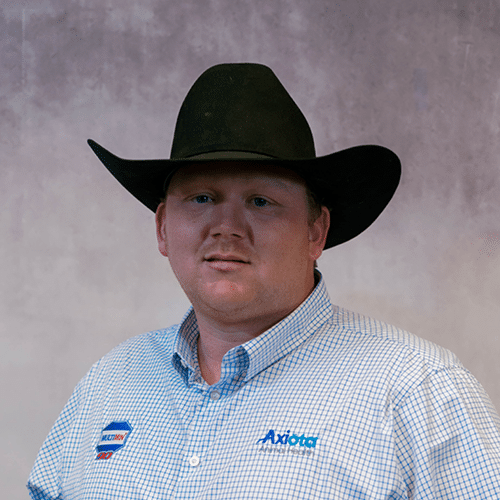
 Trace minerals are needed in very small amounts but are critical to optimize the reproductive performance of the heifer, cow and bull to impact overall conception. The trace minerals that are usually discussed and have an impact on the reproductive performance are copper (Cu), Zinc (Zn), Selenium (Se) and Manganese (Mn). In the heifer and cow, copper is essential for puberty, estrus and ovulation, as well as embryo survival and low conception. Zinc is essential for estrus and normal parturition. Selenium deficiency has been linked to retained placentas, ovarian cysts and low conception rates. Manganese is important for estrus and the formation of the corpus luteum which maintains pregnancy. In the bull, copper is essential for libido and normal sperm production. Zinc is essential for growth, puberty, libido, testicular size and testosterone biosynthesis. Selenium is important for sperm viability. Manganese is needed for normal sperm production and testicle size. Overall, the trace minerals play an integral role in the reproductive performance of a herd.
Trace minerals are needed in very small amounts but are critical to optimize the reproductive performance of the heifer, cow and bull to impact overall conception. The trace minerals that are usually discussed and have an impact on the reproductive performance are copper (Cu), Zinc (Zn), Selenium (Se) and Manganese (Mn). In the heifer and cow, copper is essential for puberty, estrus and ovulation, as well as embryo survival and low conception. Zinc is essential for estrus and normal parturition. Selenium deficiency has been linked to retained placentas, ovarian cysts and low conception rates. Manganese is important for estrus and the formation of the corpus luteum which maintains pregnancy. In the bull, copper is essential for libido and normal sperm production. Zinc is essential for growth, puberty, libido, testicular size and testosterone biosynthesis. Selenium is important for sperm viability. Manganese is needed for normal sperm production and testicle size. Overall, the trace minerals play an integral role in the reproductive performance of a herd.
In the heifer and cow, the optimal time for MULTIMIN® 90 injectable trace minerals is 30 days pre-breeding. University conducted trials have shown an increase in overall herd conception rates with more calves conceived either by artificial insemination or on first bull breeding resulting in more calves born early in the calving season.
 Another optimal time to give a MULTIMIN® 90 injection is precalving which usually occurs before the last trimester when pregnancy checks or at scour vaccine administration are performed. During the last trimester of pregnancy, the cow pulls trace minerals from her liver into her blood stream which flows through the placenta into the umbilical vein of the calf. The trace minerals are then deposited into the developing fetus’s liver. This stacking is the reason MULTIMIN® 90 is given to the pregnant cow because it raises her liver levels when she will be recruiting them for her developing fetus. This helps to keep her trace mineral levels from plummeting too low which can result in retained placentas, uterine infections and mastitis.
Another optimal time to give a MULTIMIN® 90 injection is precalving which usually occurs before the last trimester when pregnancy checks or at scour vaccine administration are performed. During the last trimester of pregnancy, the cow pulls trace minerals from her liver into her blood stream which flows through the placenta into the umbilical vein of the calf. The trace minerals are then deposited into the developing fetus’s liver. This stacking is the reason MULTIMIN® 90 is given to the pregnant cow because it raises her liver levels when she will be recruiting them for her developing fetus. This helps to keep her trace mineral levels from plummeting too low which can result in retained placentas, uterine infections and mastitis.
This trace mineral injection is to be used in conjunction with a consistently provided oral trace mineral program. The injection helps bridge the gap when cow’s need for trace minerals are highest and avoids issues such as low, inconsistent oral trace mineral consumption, low absorption rates of oral trace minerals, and the tying up of oral trace minerals in the rumen (antagonism). Cattle do not eat mineral based on their need. Consumption is only affected by added salt and position of the mineral source in relation to the water source.
 In the bull the optimal time for MULTIMIN® 90 injectable trace minerals is 45-60 days prebreeding which usually corresponds to the time a Breeding Soundness Exam or semen fertility test should be done. In developing bulls, an injection should be given at weaning and then 90 days later. A Kansas State study showed that developing bulls given this two-injection protocol of MULTIMIN® 90 had improved sperm motility, sperm morphology and a higher passage rate of their Breeding Soundness Exam.
In the bull the optimal time for MULTIMIN® 90 injectable trace minerals is 45-60 days prebreeding which usually corresponds to the time a Breeding Soundness Exam or semen fertility test should be done. In developing bulls, an injection should be given at weaning and then 90 days later. A Kansas State study showed that developing bulls given this two-injection protocol of MULTIMIN® 90 had improved sperm motility, sperm morphology and a higher passage rate of their Breeding Soundness Exam.
MULTIMIN® 90 should be given under the skin along the neck as the lowest injection following Beef Quality Assurance Guidelines. The dose of MULTIMIN® 90 is calculated using the age and weight of the animal. Heifers and bulls 1 to 2 years of age are dosed at 1 cc per 150 pounds bodyweight with cows and bulls 2 years of age and older dosed at 1cc per 200 pounds bodyweight subcutaneously.
MULTIMIN® 90 injectable trace mineral is an integral to maintaining and improving a herd’s reproductive efficiency. Talk to your veterinarian about MULTIMIN® 90.




























